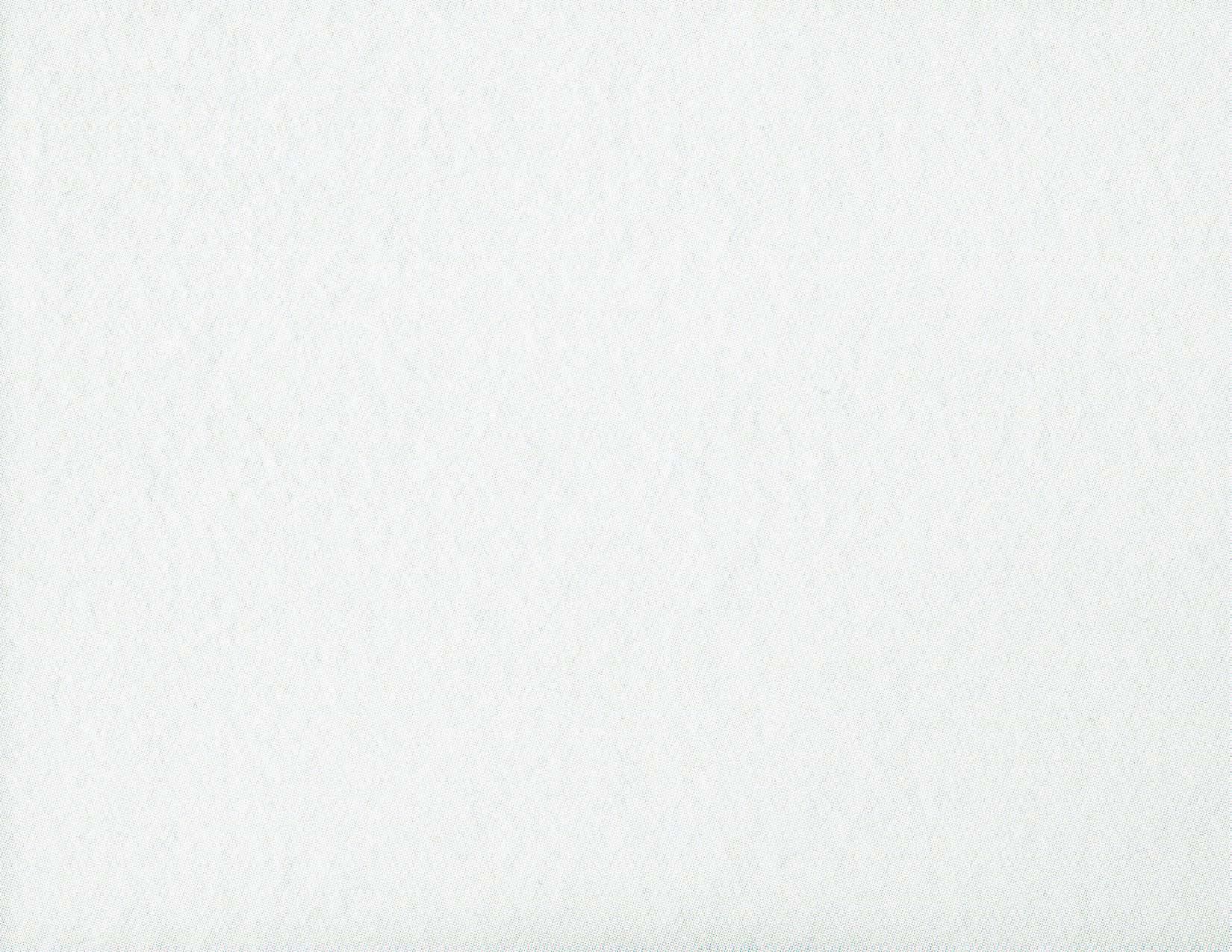
sanaqu123@gmail.com

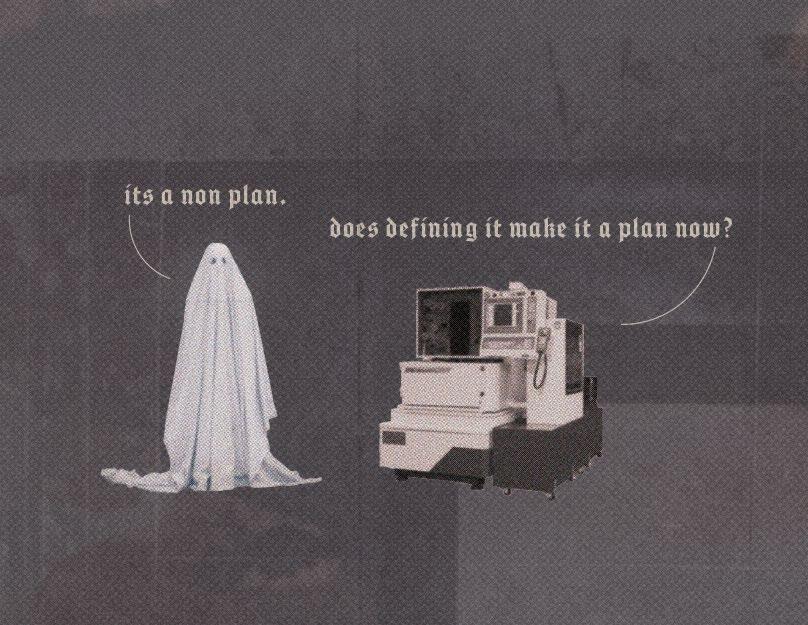




sanaqu123@gmail.com





in pursuit of understanding spatial qualities in sectional and planar compostions
This studio project served to consider multiple parameters including structure, organization, and material through the tool of ideation. An understanding of variables allows for acknowledging their potential and how to inform each other. The site nestled in rural Cherry County, Nebraska, students were tasked with creating a 20 story building that served the landscape and it’s people.
In isolated Cherry County, NE lies a hub for regional artists and their art. The 20 story structure is both a residence where artists may be recruited to stay and create, and an educational gallery, where visitors may view artwork, attend shows, and learn more about the artistic processes. The form focuses on letting the user to effortlessly move through the building through it’s subtle curvature, to allow emphasis on the outward built landscape. A sunken garden and an excavated lake derived from the existing river creates an outdoor space where users may appreciate the isolated landscape.




The first floor hosts a gallery space, an auditorium, an art store, and office spaces. The following six floors are work areas for resident artists to develop their craft. The artists reside in apartments located in the cylinder forms. The top five floors include the library and curated galleries for longer term exhibitions.



The physical model was used as a device to showcase the subtle curvature changes within the building plans. The levels have a direct relationship with the growing angle of rotation, which allows for outwards views into the vast landscape and accessible visual movement.

Glass Blowing 01
November 2021 4 weeks
Kimball

in pursuit of engaging more intimately with human scale and material processes
In October 2021, the Belger Art Center, located in Kansas City, opened the Belger Glass Annex. Tyler Kimball, glass artist and instructor offered twelve spots for twelve curious people. This course explored foundations of glass blowing and refining of technique. First engaging with solid glass forms, then introducing blowing skill and adding color. Finally, a culmination of these methods are used to create a glass cup form.

a rigid space riddled with steel and concrete, a rather desolate place to dance.
scorching molten vicious lava waiting to be acquainted with delicate touch
a set of hands never once engaging in sturdy contact, more often simply entertaining contact
movements fluttering, grazing limbs, and an extension of your sense-full body entering an unwelcome lair of searing and singeing heat
a bead of sweat cascades down your forehead, shattering unto the cold concrete slab.
is it the heat? is it fear?
perhaps its because you’ve been parading back and forth endlessly for the sake and sanity of this simple glowing orb fused to the end of this simple steel rod.
maybe then it’s not so simple...
but you simply don’t have time to ponder such quandaries
time so fleeting in fact, that you simply don’t have time to discern if it is your friend or your enemy.
once it has passed, you have an artifact encapsulating your skillful performance
it may be imperfect, immortalizing your clumsy efforts to remember your next dance move

but the audience is you, laying bare to your criticism just the same as your admiration of an ever fleeting performance.

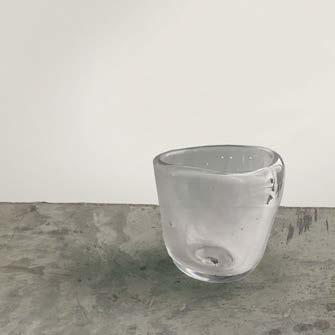

Instructional process for making a cup
Partner collaboration, opening and setting walls for a cup




HodgePodge Studio
Spring 2020 10 weeks
Ellen
Donnelly

in pursuit of theoretical architecture, accessible compositions, & white noise
This studio project takes hodgepodge as a strategy to understand what it means to situate architecture, as well as methodology of approaches to explore architectural ideas and proposals. Studio hodgepodge uses an intentionally confused mixture of techniques to forge new ways of seeing, representing and designing. The presented site exists in Detroit, Michigan, as an empty building shell, awaiting a hermit crab to arrive and occupy space and activity.
SUBLIME began as an exploration of architecture, academia, institutional events and their hierarchical implications. How can architecture, academia, and institutions open themselves up to not just be a spectacle of consumption, but an accessible stage of performative experience? Given the location of East Warren, a neighborhood in Detroit, Michigan, with people of vibrant cultures and resilience, SUBLIME emerged as a methodology of space creation that aims to focus on the agency of the people and their actions. Using resources such as “Situationist City” by Simon Sadler, this project poses a reality in which the people bend the architecture to their needs. It allows for people to explore the influence of their own assemblies. SUBLIME performs for the people as much as the people perform for it. The artifacts produced kept in mind accessibility in architectural representation.
It invites performance, storytelling, obnoxious crowds, a spectacle of people, curious inquisition, white noise, fun, disruptive exploration.
It invites the people.



Following the initial research phase, a phrase mapping activity was conducted to visually depict correlations between relavent terminology.
These correlations were used to derive nine typologies of space that visually explore the research methodologies.



Informal Stimulus:
Spatial and sensory queues that are aware of thier presentation. Information given as a form of concious but casual consumption leading to discourse that mingles between formal and informal.
Situation Inversion Spectacle:
A sight to see. A site to see. Inverting the connotations of institutional events to present a spectacle as palatable moments to view, react, and interact amongst.
Destandardize Inside/Outside:
To de-steralize and question the premises of establishment and public program formats. Pushing a focus towards framing human action, stumulation and accessibility.
Information Reaction Arbitrator:
Architecture as an arbitrator of information and the reaction to information serving as an mediator of program.
Dwell, Invade Wonder:
To dwell on a thought and invade it with awe. To dwell in a space and invade the space with individual thought.
Teeming Typologies:
Space typologies teeming, overflowing, gushing. Users in space as teeming, invading, reclaiming autonomy.
Remix Disturb:
Reconstructing the connotations of disruption towards positive ideologies, in order to disrupt the narrative of elitist and institutional events.
Non-Linear Mess:
A series of free-standing autonomous objects to allow individual value a free will. A messy hodgepodge that drifts towards more specialized space.
Enabling Sublime Network Noise:
To faciliate a space as a non-centralized psychogeography of freestanding and autonomous activites using noisy and playful sensory tactics.























https://issuu.com/sanaqu123/docs/limes_a_childrens_book

LIMES is a visual novel entailing the adventures & explorations of four strangers. During their journey, they discover the agency of their actions, though they may not know it at first. They have the power to curate their experience through their assemblies.
The book emerged as a device to represent the methodologies of the project in a medium that is accessible and understandable for everyone. This focuses on the agency & assemblies of people , and why academia and institutional events should be more than just an unobtainable spectacle. It should be something to have fun, interact, react with, to create a sublime chronicle of performance and experimentation. With that, this book was created so that even a child would be able to be entertained while also learning and grasping the concepts in a simplified format.

Integrate Studio Spring 2021 2 weeks
Beau Johnson
in pursuit of understanding how different bodies exist in the same space
A preliminary study was introduced to the studio as a method of understanding space and movement within museum galleries. When entering a space, feeling is informed by what the cosmic body allows to be perceived. What is percieved informs individual action. Nine typologies, or people, are used to break down the different ways in which spatial autonomy can be manifested.
An artwork is placed in space with meticulous detail, inspected and hung in the perfect spot, polished and pristine, yet there it sits, amongst others in a sterile gallery, dwelling in it’s own stillness, waiting to be discovered, inhabited and acknowledged by the instinctual curiosity that inhabits ourselves.
As the body enters this space, a predestiny awaits them, occupying their vessel of experience, bound by their own methods of inquisition.
Not calculated, but considered.
A curious concoction of one’s own captivation.
With each step taken, abandoning their ghost trails which are left to evaporate into the space just the same as their own fleeting fascination.
Here are the museum go-ers and do-ers, presented as an artifact of instinctual curiosity.

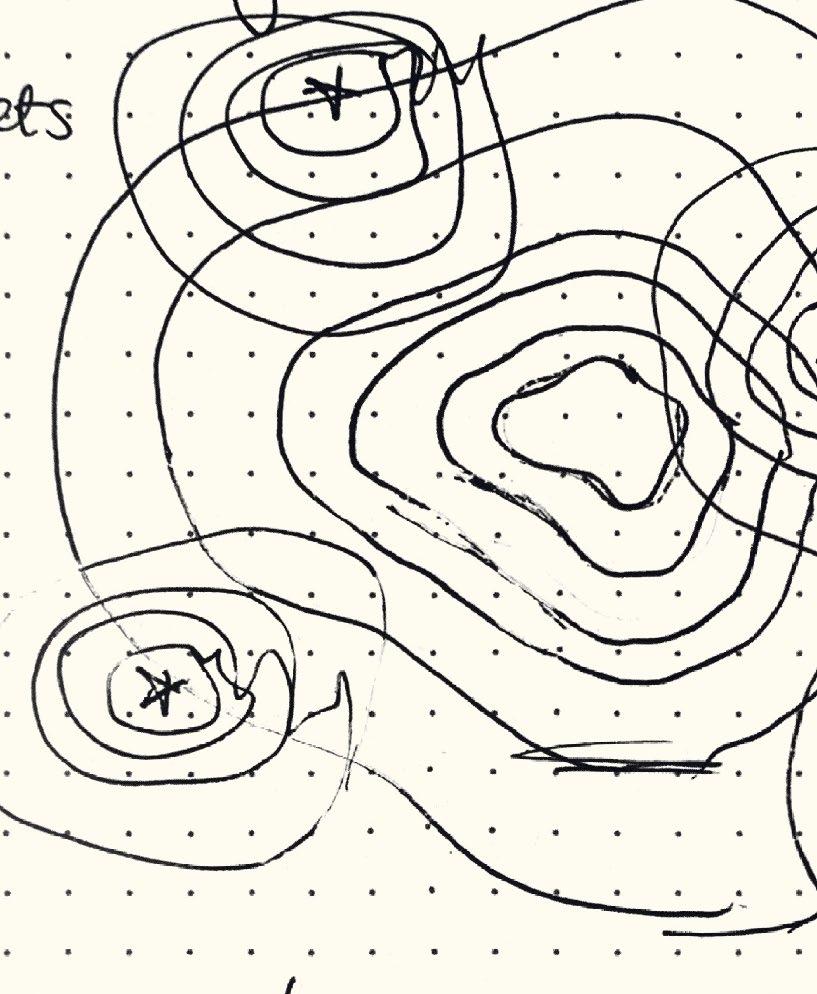

Scanning the gallery, devising a calculated but enjoyable approach, a planned route with the scenic stops, not driven by outward senses, instead letting the plan of action lead their discovery.

The Impetuous Novice
Embracing a heedless inhabitation, the novice remains free from the unspoken constraints of space. Acting on senses, responding to their truest desires, exploring where their mind and body leads them.

The Boundless Inquirer
A deep urge to understand, leaving no questions unanswered, the inquirer takes no heed to unspoken rules. Left unspoken, the boundless adventurer leaves no crevice unawknoledged.
The Secret Admirer
Fantasizing from afar, for an extended period of time, not worried about the detail, instead swallowed by its alluring appearance, happy to be engulfed.
A wanderer with no imagined destination, roaming the terrain looking for something to sustain their mind and eye. No concern for inhabiting the grandest piece. Grounded in action but open to anything.

The Jaded Virtuoso
The burden of constraints falls on the shoulders of the virtuoso, filled with wisdom that pairs the novice’s naivety, trailing behind, watching over, hyper aware of the bounds that the novice carelessly ignores.
The Missed Oppurtunity
A passing glance, unknowingly holding their breathe, tension fills the room, yet nothing more to be experienced. Will they be haunted by the thought of what enticed them for a moment’s hesitation?


The Fumbling Challenger
Stumbling into the arena, caught by surprise. Turning around, they didn’t expect to be challenged, yet the idea of it excites them. The adrenaline fuels the desire.
The Keen Conqueror
Crusading through the vast environment, everything in eyesight is something to behold, to have, to conquer. Creeping in from all angles to assess how to best approach this battle.

Integrate Studio
Spring 2021 14 weeks
Bea u Johnson
Partner: Cole OConnor

in pursuit of exploring threshold, passive space, and active occupancy
Portal Jelly has found that the language of the Sheldon Museum of Art allows for the user to understand the hierarchical formal qualities of space through the relationship between the body and its questions and the architecture and it’s answers. The formality of the Sheldon presents an architecture that answers to itself, but where does that leave the body?
Placed amidst a college campus, the Sheldon, designed by Phillip Johnson, sits on a pedestal, visually attainable, but contextually disparate. In order to contextualize the Sheldon, it’s language is understood, assessed, and remixed to present a space that allows for the users to implement their autonomy.
The logics of the Sheldon and it’s remix are intersected to understand the relationship each has with the architecture and the body. The formality of the Sheldon answers to itself, leaving the body to wander and question. The body uses questions as a reference of tangibility and the architecture answers by presenting the merit of experience. When they overlap, a resolution of thought emerges. The addition flips this logic, presenting space that asks questions that are answered through the existence of the body in the space. Arriving to the same overlap, a resolution of thought, but one that surrenders the autonomy to the user and their episodic discovery.
Portal Jelly is an invitation to probe past a superficial understanding and to excavate an individualized path. While it may not be known what spaces await past the portal, the choice of disposition sends an invitation for the body to explore and the mind to wander.

“... causing architecture to appear as a moments hesitation, as uncertainty, as a question rather than an affirmation.”
Abalos & Herreros
How much do we translate to be understood and how much do we leave to the mystiques of each person’s imagination?

Where do we place uncertainty and where do we place merit of experience?
Where lies the autonomy of disposition?

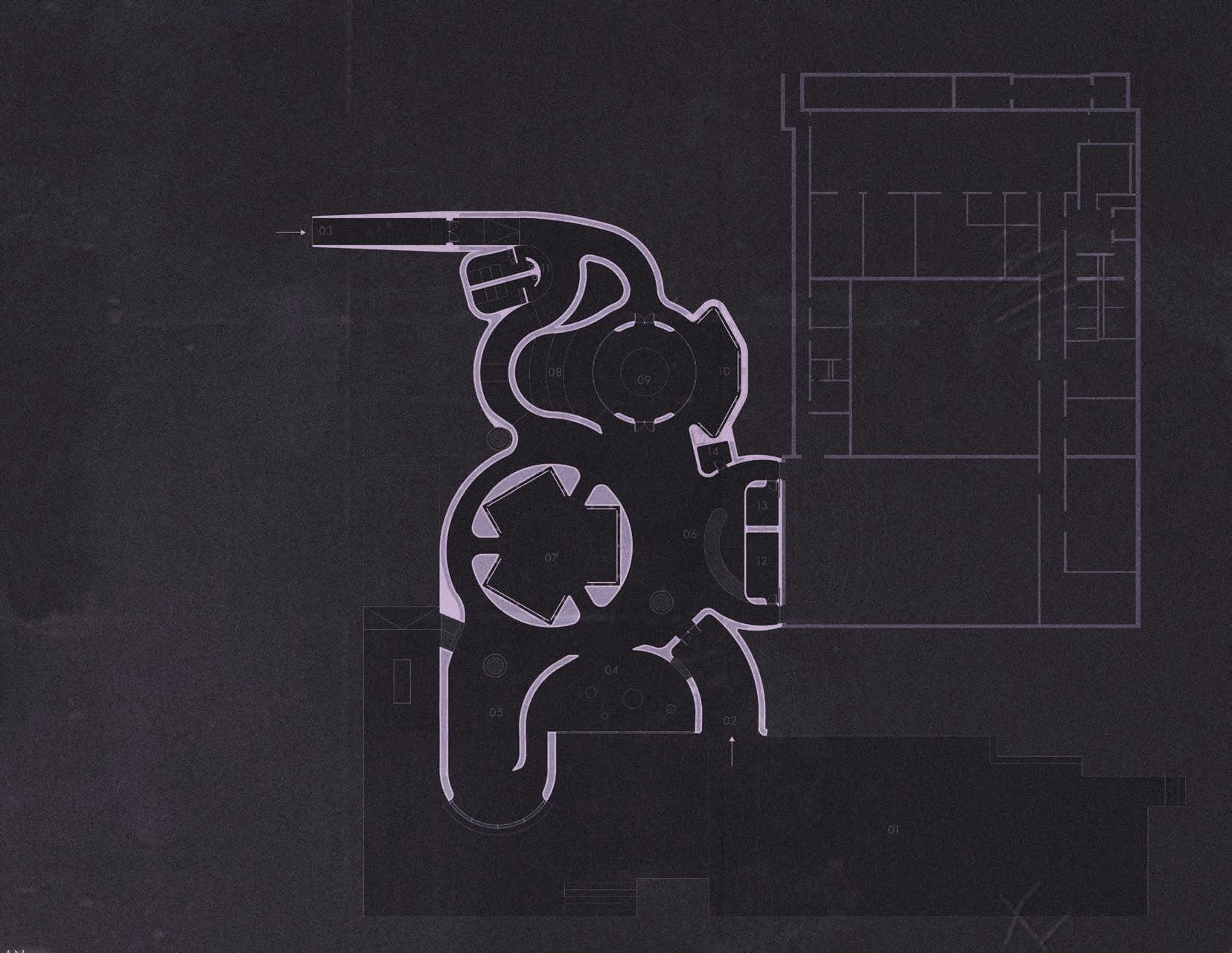






This sculpture display space has views from the exterior and interior of the building. While the curvature offers a sense of unfamiliarity, creating pockets of space that exist beyond the edge that can be seen, the sculptures offer a familiar affinity. By grounding these unfamiliar spaces with elements that are meant to be stable and considered, it allows for the user to become comfortable with unfamiliarity.
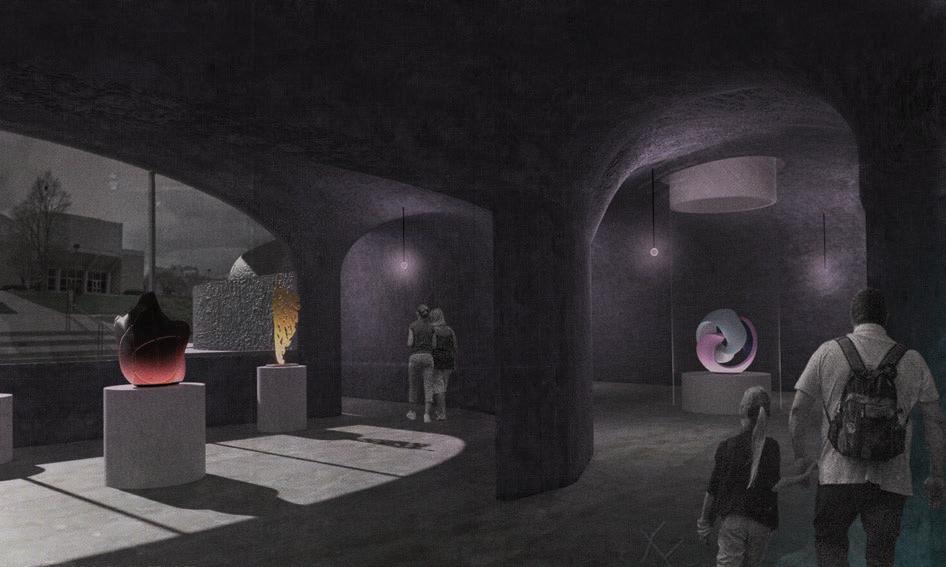
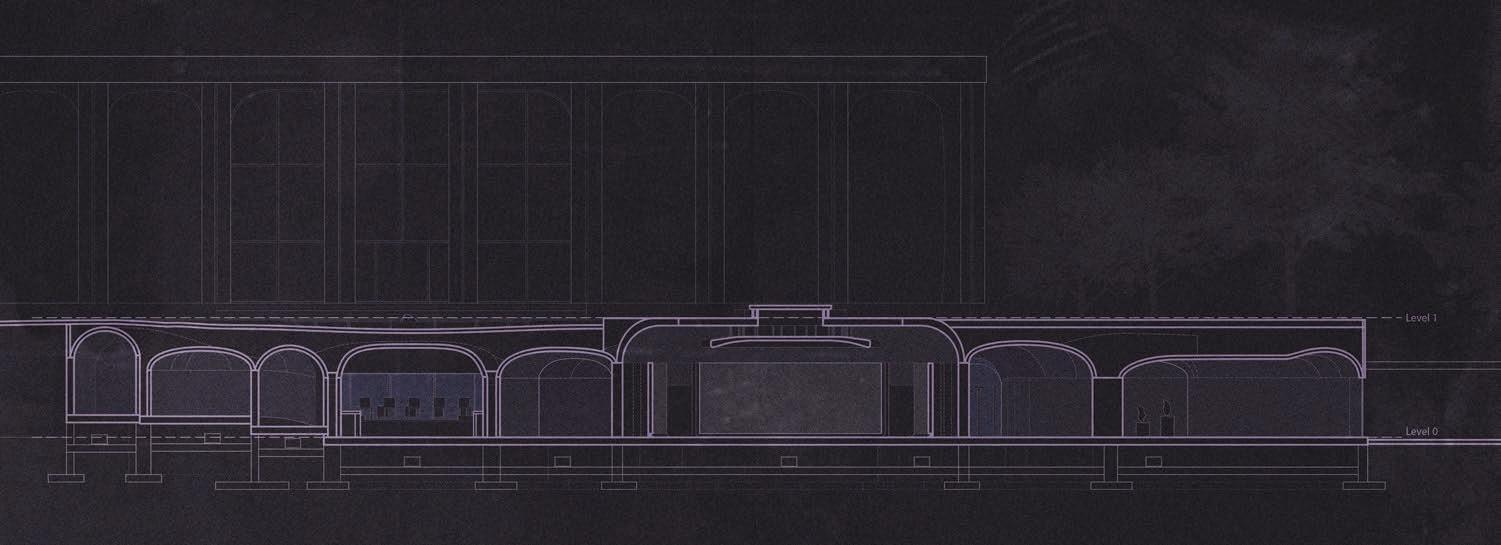



Portal Jelly is an invitation to probe past a superficial understanding and to excavate an individualized path. While it may not be known what spaces await past the portal, the choice of disposition sends an invitation for the body to explore and the mind to wander.
Ceramic Printing
September 2021 8 weeks
in pursuit of creating visual allegories embedded within a functional artifact
An ever persistent interest in ceramics and exploring intimate human scale led to learning underglaze print making methods at the Belger Crane Yards Studio, located in Kansas City.
“You’ve Got Mail”, is a visual story spanning the exterior of a 20 lb. slab constructed terracotta pot.

01 Construct composition on paper, layering backwards using colored underglaze.
02 Apply even layer of porcelain slip onto the composition and let dry until no sheen is left.
03 Using a roller and rib tool, apply composition to 24”x32” terracotta slab, applying even pressure.
04 Carefully remove craft paper to reveal final layered composition.
05 Roll slab into cylindrical form and apply to circular slab base.
06 Refine edges and add drainage openings and excess water barrier.
07 Fire piece in kiln, apply matte zinc mixture, and fire again.
08 Completed, and you’ve got mail.





“You’ve Got Mail!” is a functional terracotta planter depicting a story at sea. Along the curvature of the form, embedded using underglaze techniques, is an invasion of starfish wreaking havoc amongst the landscape. Involving themselves in every component of the design, overflowng thier presence in places they may not be welcome. Surfing, driving a boat, reflected in the eye of a fish, transcending the topography of the island, they are simply everywhere, expect the mailbox. There awaits the satisfaction that they may be seeking .




The following is a medley of mixed mediums and messages. Explorations across an interconnected web of disciplines. A place of expansion and discovery in which overlap doesn’t create clutter, but clarity. Harmouniously in the pursuit of... nothing something everything












“What Does America Feel Like Today?” (digital collage) 2021

